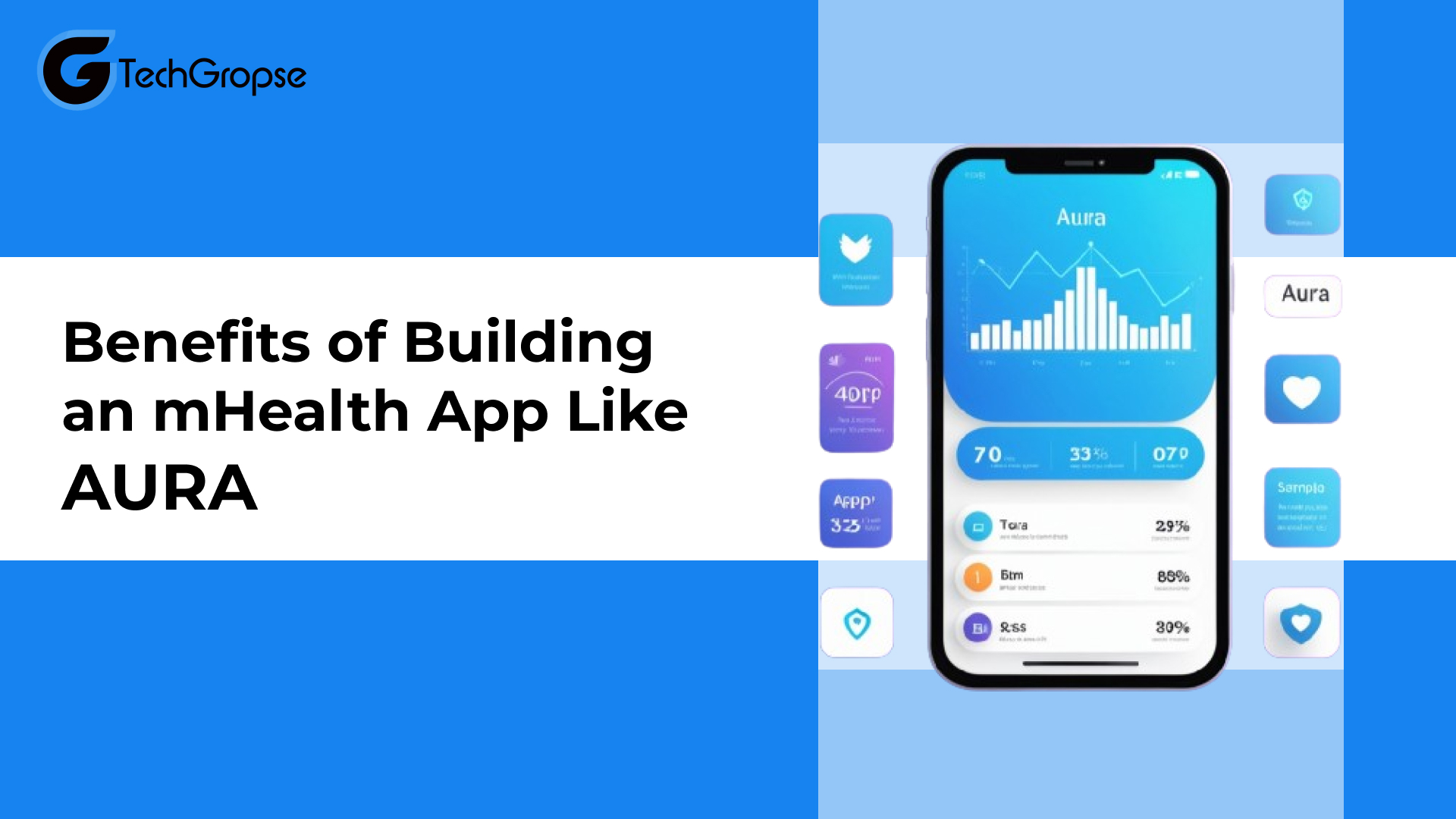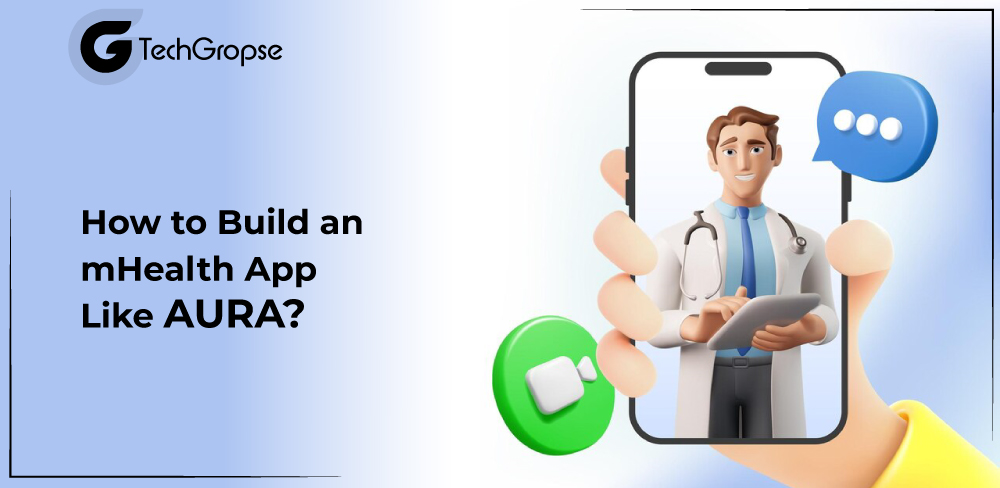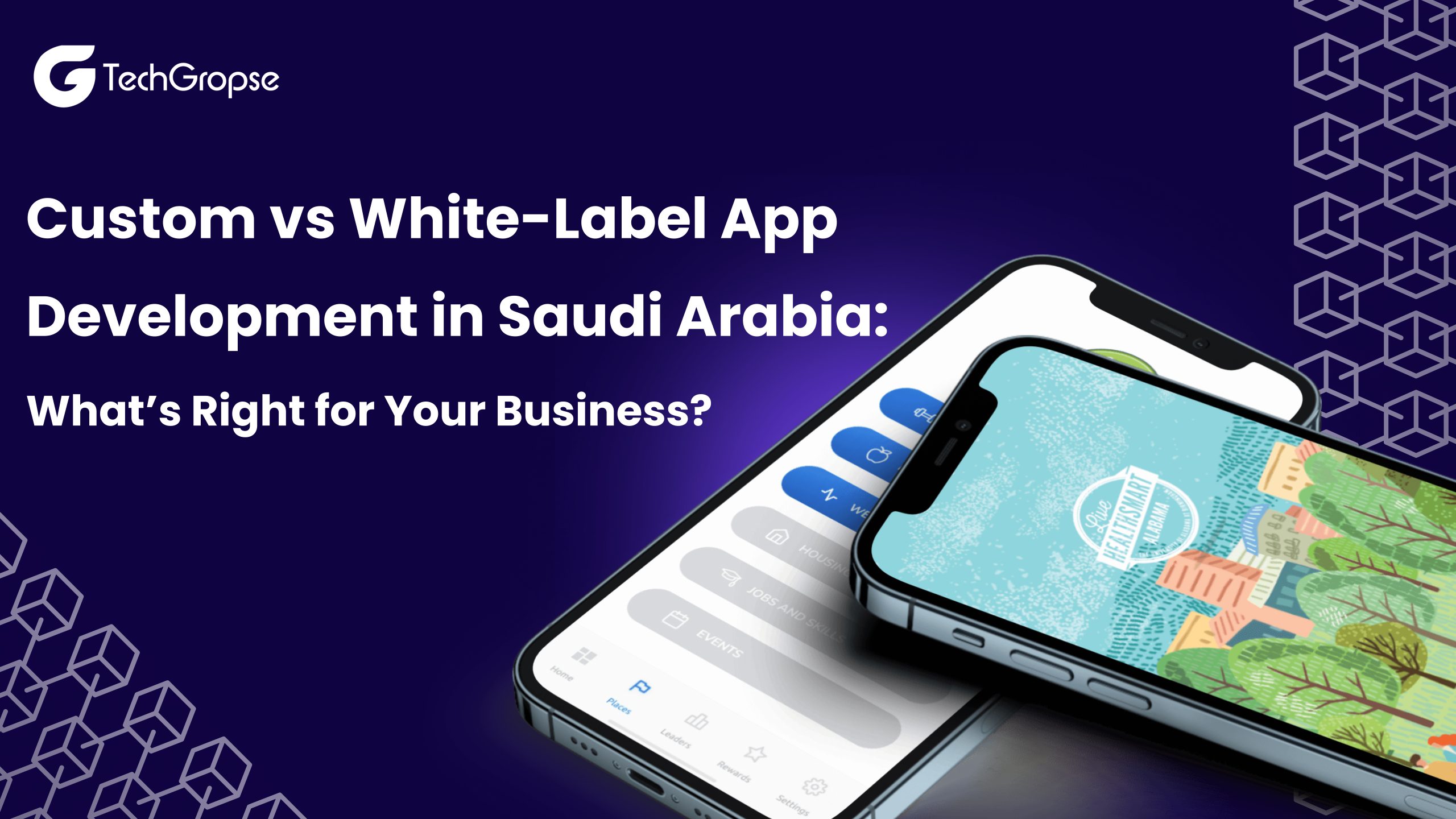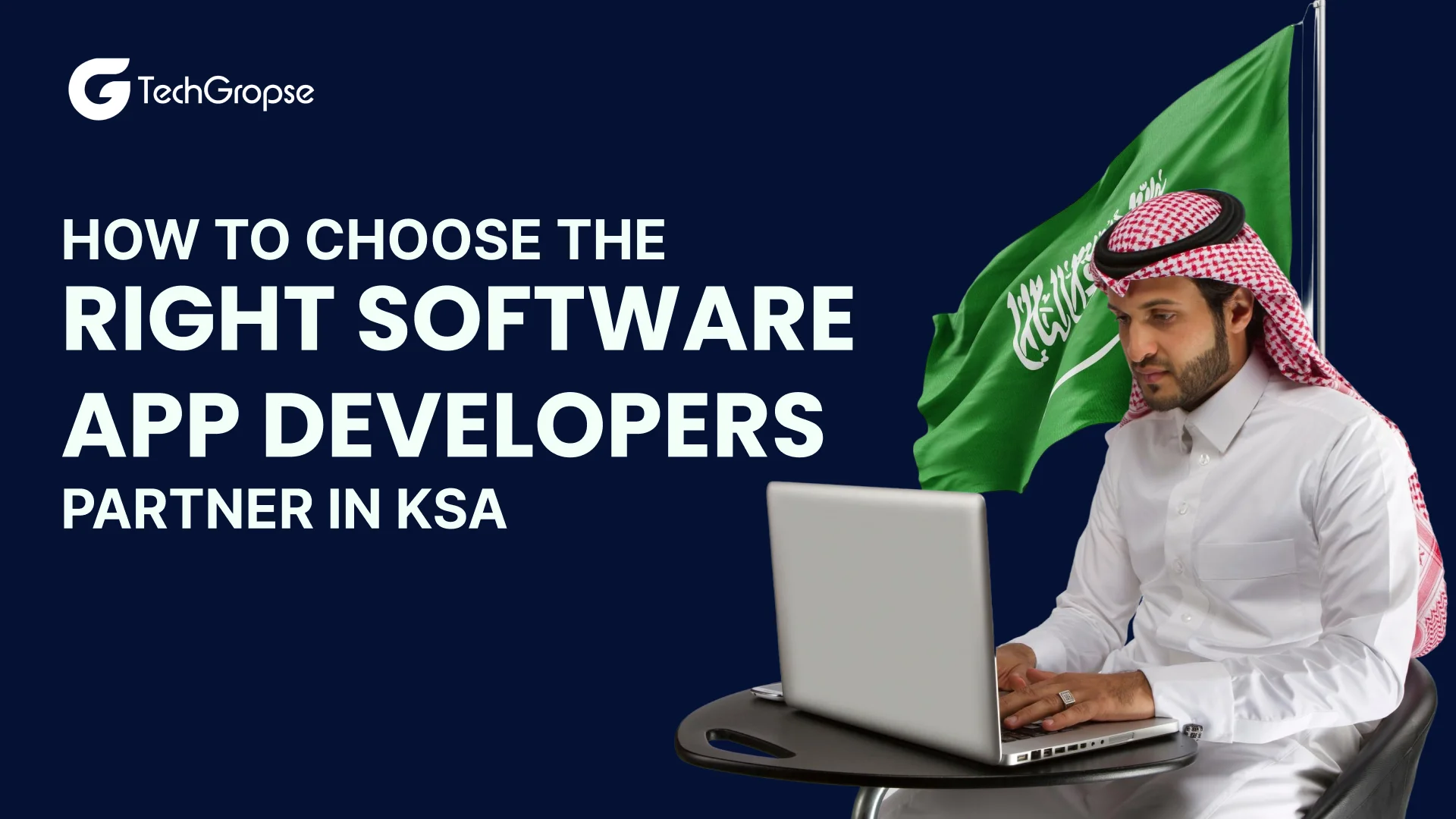Are you inspired by the success of mHealth? Do you want to build an mHealth app like AURA to provide mental health support to users? Don’t worry, We are here to help you.
We are living in a world where we depend on our phones for everything from ordering food to finding love.
So, it is no surprise that our health is also getting the app treatment. Enter mHealth apps, the superheroes of healthcare in your pocket.
Imagine creating an app that not only helps users track their mood and manage stress but also provides personalized recommendations and support based on their individual needs.
With its creative features and personalized approach, AURA has set a new standard for mental health apps, changing the way we access and manage our well-being.
If you have been eager to make a meaningful impact in the field of mental health, building an mHealth app like AURA could be your next big step.
From defining your app’s purpose to implementing essential features and ensuring compliance with regulations, we’ll cover everything you need to know to bring your vision to life.
So, if you are ready to make a difference in the world of mental health, let’s get started on this exciting journey of mhealth app development together.
But first, you should know – what is mHealth?
What is mHealth?
mHealth, short for mobile health, means using smartphones and other devices to take care of your health. It is like having a health assistant in your pocket.
With mHealth, you can do many helpful things, like track how many steps you take, remember to take your medicine, or even talk to a doctor through a video call.
You can also use mHealth apps to keep track of your mood, find healthy recipes, or learn new exercises.
mHealth makes it easy for everyone to stay healthy, no matter where they are or what they need. It’s all about using technology to make taking care of yourself simpler and more convenient.
Overview of AURA
AURA is like having a personal health assistant. It offers features like symptom tracking, medication reminders, and health insights to help you level up your wellness game.
In simple words, AURA is a special app that helps people take care of their feelings and emotions. It’s like having a friend to talk to whenever you need it!
With AURA, you can keep track of how you are feeling each day and even write about your thoughts and experiences in a digital diary.
The app also has lots of relaxing activities, like meditation and deep breathing exercises, to help you feel calm and happy.
One of the best things about AURA is that it’s always there for you, 24/7. If you ever feel sad, stressed, or worried, you can open the app and talk to someone who understands and wants to help.
AURA is like a caring friend who’s always ready to listen and support you whenever you need it. Plus, it’s user-friendly and as stylish as your favorite Instagram influencer.
Current Market Statics and Trends of mHealth Application
Here are some key statistics and trends in the mHealth app market:
- The number of mHealth app downloads worldwide is expected to reach 1.7 billion by 2024.
- Chronic disease management and remote patient monitoring are among the top use cases for mHealth apps.
- Wearable devices integrated with mHealth apps are becoming increasingly popular for fitness tracking and health monitoring.
- Telemedicine services through mHealth apps have seen a surge in demand, especially during the COVID-19 pandemic.
- As of now, the mHealth app market is experiencing significant growth due to the increasing adoption of mobile devices and the growing demand for remote healthcare services.
- According to a report by Research and Markets, the global mHealth app market is expected to reach $236.0 billion by 2026, with a CAGR of 44.7% during the forecast period 2021-2026.
- The mHealth app market is getting bigger every year. In 2023, it was worth about $32.42 billion, and it’s expected to keep growing. By 2030, it’s estimated to be worth a whopping $861.40 billion. That’s a huge increase, with a growth rate of about 14.9% every year from 2024 to 2030.
- The mHealth app market is getting bigger every year. In 2023, it was worth about $80.87 billion, and it’s expected to keep growing. By 2030, it’s estimated to be worth about $861.40 billion.
Benefits of Building an mHealth App Like AURA
AURA stands out as a remote patient monitoring app focusing on blood pressure management.
It guides users through self-administered blood pressure tests, collects data, and provides personalized insights and recommendations.
AURA shows the potential of healthcare app development solutions to empower individuals and improve health outcomes.

Here is a glimpse into the benefits to build an mHealth app like AURA:
- Improved Patient Engagement: mHealth apps help users to actively participate in their healthcare journey through self-monitoring, personalized feedback, and educational resources.
- Enhanced Convenience: Users can access healthcare services remotely, reducing the need for frequent clinic visits and saving valuable time.
- Data-Driven Insights: mHealth apps collect valuable health data, allowing healthcare providers to make better-informed decisions and personalize treatment plans.
- Reduced Healthcare Costs: By promoting proactive health management and early intervention, mHealth apps can contribute to reducing healthcare costs in the long term.
- Scalability and Reach: mHealth apps have the potential to reach a wider audience compared to traditional healthcare delivery methods.
Top Innovative Healthcare App Startup Ideas in 2024
To start a healthcare startup effectively, you need hard work and good understanding. Study the medical industry well.
It is important to keep up with existing healthcare apps and trends. It helps you stay updated and move forward. If you want to build an mhealth app, take a look at some design ideas for applications.
1. AI-Powered Symptom Checker App
- This app uses artificial intelligence (AI) to analyze user-reported symptoms and provide personalized health recommendations.
- Users can input their symptoms, medical history, and other relevant information. The app will generate a list of possible diagnoses and recommended next steps like seeking medical attention or self-care measures.
2. Virtual Physical Therapy Platform
- This platform connects users with licensed physical therapists for virtual consultations, personalized exercise programs, and progress tracking.
- Users can schedule virtual therapy sessions, and communicate with their therapist via messaging or video chat. They can access a library of instructional videos and resources for at-home exercises and self-care.
3. Digital Health Passport App
- This app provides users with a digital health passport that stores their medical vaccination history, records, and COVID-19 test results.
- Users can easily share their health information with healthcare providers, employers, and other organizations. It provides a convenient and secure way to access and manage their health data.
4. Remote Patient Monitoring Platform for Chronic Diseases
- This platform allows healthcare providers to remotely monitor patients with chronic conditions, such as diabetes, hypertension, or heart disease.
- Patients can use the app to track their health metrics, receive personalized health recommendations, and communicate with their healthcare team. Custom mhealth app development helps to improve treatment plans and reduce the risk of complications.
5. Mental Health Support App for Teens
- This app provides mental health support and resources specifically tailored to teenagers and young adults.
- Users can access self-help tools, connect with supportive groups, and schedule virtual counseling sessions with licensed therapists who specialize in mental health.
6. Remote Dermatology Consultation App
- This app connects users with board-certified dermatologists for virtual consultations, diagnosis, and treatment of skin conditions.
- Users can upload photos of their skin concerns, and answer questions about their symptoms and medical history. They can receive personalized treatment plans and prescriptions, all from the comfort of their own homes.
7 Essential Steps to Build an mHealth App Like AURA
Building an mHealth app like AURA requires careful planning and execution. With the right team and resources, you can make a meaningful impact on the lives of those struggling with mental health issues.
Let’s explore the step-by-step process to build an mHealth app like AURA that offers similar functionalities.

Step 1: Define Your App’s Purpose and Target Audience
The first step in building an mHealth app like AURA is to define the purpose of your app and identify your target audience. Ask yourself:
– What problem does my app solve?
– Who are my target users?
– What are their specific needs and pain points?
Understanding the needs of your target audience is crucial for designing a successful mHealth app.
You can choose a mobile app development company to conduct thorough market research and gather insights into the preferences and behaviors of your target users.
Step 2: Research and Choose Key Features
Once you have defined your app’s purpose and target audience, it’s time to research existing mHealth apps like AURA.
Identify the key features you want to incorporate into your app. Some essential features to consider include:
|
Step 3: Choose the Right Technology Stack
Selecting the right technology stack is essential for the successful development of your mHealth app.
Consider factors such as scalability, security, and compatibility when choosing your technology stack.
On-demand app development company use some essential technology in mHealth app development including:
|
Step 4: Design UI/UX
A user-friendly interface is crucial for the success of your mHealth app. Hire dedicated developers with experienced UI/UX design to create a visually appealing interface that enhances the user experience.
Pay attention to factors such as:
|
Step 5: Develop and Test Your App
Once the design phase is complete, it’s time to develop your app. Work with experienced developers to offer on-demand app development solutions.
Ensure to conduct thorough testing to identify and fix any bugs or issues. Some best practices for healthcare app development and testing include:
|
Step 6: Implement Security and Compliance Measures
Security and compliance are paramount when dealing with sensitive health data. Ensure your app complies with all relevant regulations, such as HIPAA.
Implement robust security measures to protect user data. Some security best practices to consider include:
|
Step 7: Launch Your App and Gather Feedback
Once your app is developed and tested, it’s time to launch it on the app stores. Gather feedback from users and use this information to make improvements and updates to your app over time.
Some strategies for gathering user feedback include:
|
Latest Emerging Trends in Mobile Health Apps
Mobile health (mHealth) apps are constantly evolving to meet the growing demands of users for convenient and accessible healthcare solutions.
Here are some of the current trends shaping the mHealth app landscape:
1. Telemedicine and Virtual Consultations
With the rise of telemedicine, more healthcare providers are offering virtual consultations through mobile apps. Patients can consult with doctors, therapists, and specialists from the comfort of their homes, improving access to healthcare services.
2. Remote Patient Monitoring
mHealth apps are increasingly being used for remote patient monitoring, allowing healthcare providers to track patients’ vital signs and health metrics in real-time. This trend is particularly beneficial for managing chronic conditions and post-operative care.
3. Wearable Technology Integration
Many mHealth apps now integrate with wearable devices such as smartwatches and fitness trackers to provide users with real-time health data. This integration enables users to track their activity levels, heart rate, sleep patterns, and more, empowering them to take control of their health.
4. AI-Powered Personalization
Artificial intelligence (AI) and machine learning algorithms are being used to provide personalized health recommendations and interventions based on users’ unique health data and preferences. These AI-powered features enhance the user experience and improve health outcomes.
5. Mental Health and Well-being Apps
There is a growing demand for mHealth apps that focus on mental health and well-being. These apps offer features such as mood tracking, meditation, stress management, and access to therapy and counseling services, making mental healthcare more accessible and convenient.
6. Integration with Electronic Health Records (EHR)
mHealth apps are increasingly integrating with electronic health record (EHR) systems, allowing for seamless sharing of health data between patients and healthcare providers. This integration improves care coordination and enables better-informed decision-making.
7. Gamification and Behavior Change Techniques
Many mHealth apps leverage gamification and behavior change techniques to motivate users to adopt healthier habits. Features such as goal setting, rewards, challenges, and social sharing encourage users to stay engaged and committed to their health goals.
8. Data Security and Privacy Compliance
With growing concerns about data security and privacy, mHealth apps are implementing robust security measures and ensuring compliance with regulations such as HIPAA to protect users’ sensitive health information.
How Much Does Cost to Build an mHealth App Like AURA?
| App Complexity | Estimated Cost | Hourly Rate | Time Duration |
| Simple App | $20,000 – $50,000 | $50 – $100 | 400 – 500 hours |
| Medium Complexity App | $50,000 – $100,000 | $100 – $150 | 500 – 670 hours |
| High Complexity App | $100,000+ | $150 – $200 | 670+ hours |
These estimates of healthcare app development costs are based on average industry rates.
It can vary depending on factors such as the specific features, design complexity, and development time required for each project.
Stay Healthy with These Trending mHealth Apps of 2024
People are using mHealth apps more and more because they are convenient and easy to use.
These apps help you keep track of your health, remind you to take your medicine, and even talk to a doctor without having to go to the clinic.
With the mHealth market growing so fast, there are lots of opportunities for app developers and healthcare providers to create new and exciting ways to help people stay healthy and happy.
| App Name | Number of Downloads | Number of Active Users | Rating | Description |
| BetterHelp | 1,000,000+ | 500,000+ | 4.6 | Connect with licensed therapists for online counseling via text, video, or phone calls. |
| Talkspace | 1,000,000+ | 500,000+ | 4.5 | Online therapy platform offering virtual counseling sessions with licensed therapists. |
| Headspace | 10,000,000+ | 5,000,000+ | 4.9 | Meditation and mindfulness apps offer guided meditation sessions, sleep sounds, and more. |
| Calm | 50,000,000+ | 10,000,000+ | 4.8 | Relaxation and sleep app providing guided meditation sessions, sleep stories, and breathing exercises. |
| Sanvello | 1,000,000+ | 500,000+ | 4.5 | Mental health app offering tools for stress, anxiety, and depression management, including mood tracking and CBT. |
| Moodpath | 1,000,000+ | 500,000+ | 4.7 | Depression and anxiety companion app providing mood tracking, self-assessment, and educational content. |
| Youper | 1,000,000+ | 500,000+ | 4.6 | AI-powered emotional health assistant offering chat-based therapy, mood tracking, and cognitive behavioral therapy. |
| Happify | 1,000,000+ | 500,000+ | 4.7 | Science-based app using games and activities to improve emotional well-being and reduce stress. |
| Daylio | 1,000,000+ | 500,000+ | 4.8 | Mood tracking and journaling apps help users identify patterns, set goals, and improve mental well-being. |
| Moodfit | 500,000+ | 100,000+ | 4.6 | Mental health app offering mood tracking, meditation, journaling, and goal setting to manage stress and anxiety. |
How Do We Help You to Build an mHealth App LIke AURA?
Did you know that the global healthcare IT market size was valued at USD 96.5 billion in 2020 and is expected to expand at a CAGR of 15.8% from 2021 to 2028?
That’s pretty surprising, right?
But why is this happening?
Well, one big reason is that people are becoming more interested in taking care of their health.
With upgraded technology increasing all over the world, doctors and healthcare organizations are starting to use digital tools more and more.
As the demand for health apps on phones goes up, these apps can do more than ever before.
So, hospitals and healthcare organizations need to get the best health apps out there to keep up with what people need now.
That is where we come in. We are TechGropse, a mobile app development company. We can help you make better decisions by using health apps.
Our team of experts can make custom health apps for your mobile phone that will help you take better care of yourself.
So, if you want to make your health app, we are here to help you every step of the way!
FAQ: How to Build an mHealth app like AURA
What is AURA, and why is it popular?
AURA is a popular app that helps people feel better mentally. It has tools for meditation, stress relief, and tracking your mood.
How long does it take to make an app like AURA?
It can take a few months to a year to build an app like AURA. It depends on how complicated you want your app to be and how good the people making it are.
How much does it cost to make an app like AURA?
Making an app like AURA can cost between $50,000 and $150,000 or more. It depends on how hard the app is to make and how long it takes to make it.










